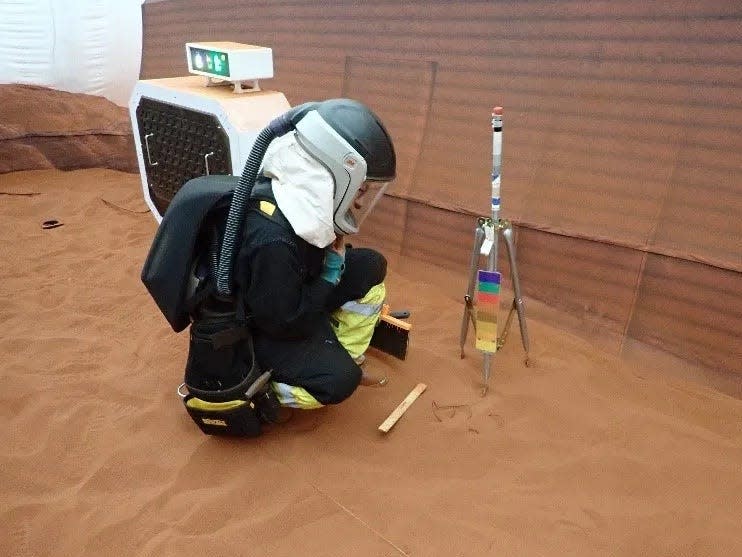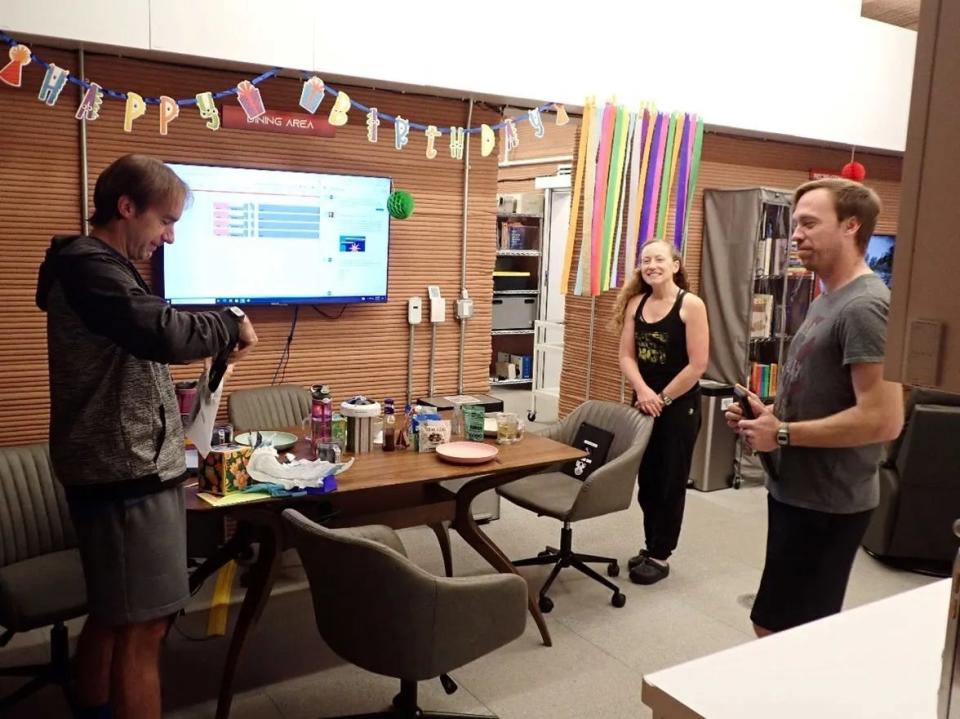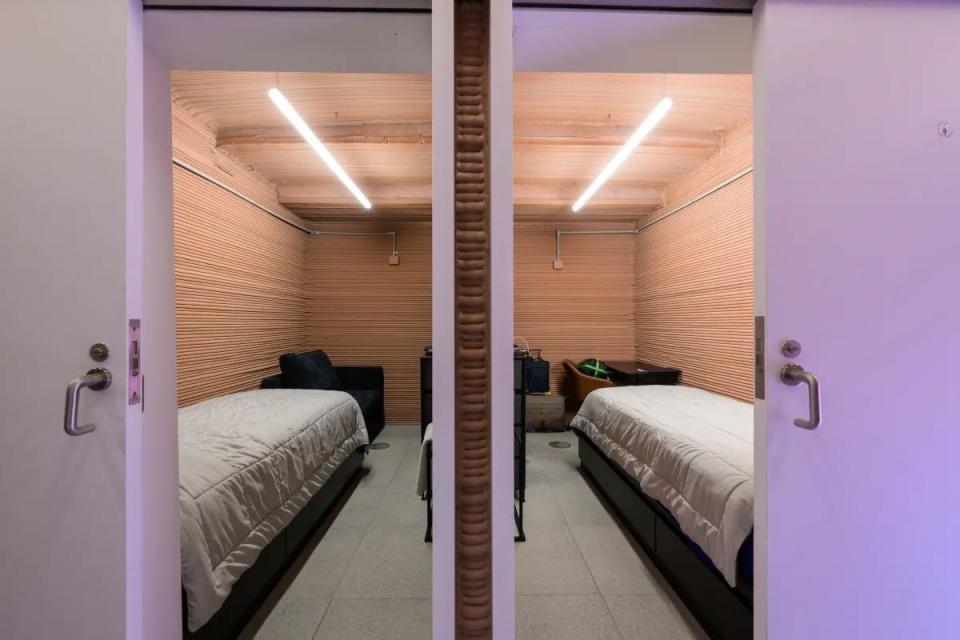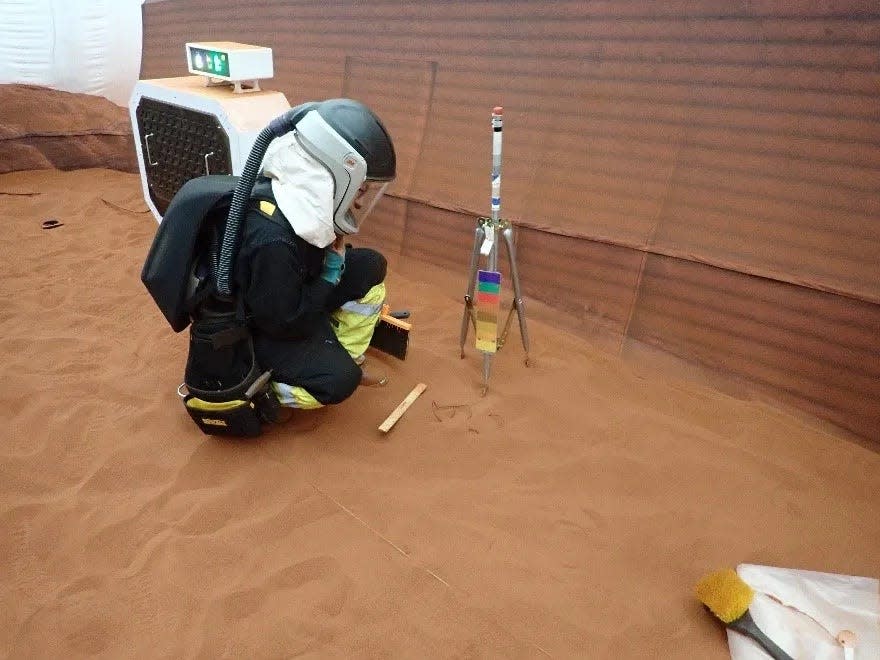An engineer who lived in NASA's Mars simulation for 378 days went through extreme isolation — but still said he'd go to the red planet for real if he could

NASA's CHAPEA mission was a 378-day Mars simulation in a habitat in Houston.
Scientists want to know what challenges astronauts will face on Mars, including extreme isolation.
Crew member Ross Brockwell said that despite the difficulties, he would love to visit Mars for real.
When Ross Brockwell emerged from a 1,700-square-foot habitat, meant to simulate life on Mars, after 378 days, he wanted to see his loved ones, eat some seafood, and jump in the ocean.
But a small part of him had hoped that when the habitat's doors opened on July 6, he'd be on the red planet for real instead of in Houston.
Brockwell took part in NASA's Crew Health and Performance Exploration Analog (CHAPEA-1) mission, along with three others. The mission was designed to help scientists learn more about the difficulties future astronauts will likely face while living on Mars, where NASA hopes to land boots by 2040.
The mission mimicked space travel conditions like communication delays, limited resources, and cramped living quarters. To Brockwell, who was the mission's structural engineer, it felt real.
"NASA did an incredible job with making a high-fidelity, immersive experience," he told Business Insider.
Not just anyone can live on Mars

When it comes to space travel, there are certain important traits, Brockwell said. "Patience is one of them, and just the ability to deal with the isolated, confined environment," he said.
Those attributes can also help when you're looking at the same group of people day after day with no means of escape.
Luckily for the CHAPEA crew, everyone got along well and became close even before they set foot in the habitat, Brockwell said, which helped reduce the sense of isolation.
Their comradery with each other was also especially important because of the communication delay with the outside world. Mars is so far from Earth that messages take over 20 minutes to arrive each way.
It wasn't a surprise, Brockwell said, but it took some adjustment. "There are moments where you really wish you could just speak in real-time, and it's just not an option," he said.
Homesickness is real

It wasn't just friends and family that the crew missed during the mission. "We all missed the ocean, and sunshine, and wind and forests," Brockwell said. "You could feel the absence of it."
There was a small gardening system, which offered some greenery, and Brockwell didn't mind the food overall.
"Given the constraints, it's really impressive how healthy and tasty and simple it is," he said.
There are only so many different meals available, though. So after a while, the crew started experimenting with new combinations for some variety.
They'd add ginger fish to potato soup, for example. "That was fun, getting creative with it during the mission," he said. But they had to be careful with resources.
Part of the mission was evaluating how the crew fared without having their food stores resupplied, just like how it would be if they were actually on Mars, according to NASA.
The finiteness of everyday items becomes immediately apparent, Brockwell said.
But you might fall in love with it

Much of the crew members' days were fairly routine, filled with activities like exercising on treadmills, cooking, talking to their families, and mission-related tasks like vehicle monitoring and maintenance. They also simulated going to the surface of Mars with extravehicular activities.
"The EVAs were all really exciting," Brockwell said. "The virtual reality was amazing."
In their downtime, the crew would play games or do puzzles. Brockwell read space-themed books like Gene Kranz's "Failure Is Not an Option" and "Endurance" by Scott Kelly.
In fact, Brockwell got through most of the habitat's library, including James M. Tabor's "Blind Descent." It may seem odd that NASA included a book that depicts some of the terrifying dangers of cave exploration for a mission about how to live on Mars, but Brockwell said he recognized its parallels with space exploration. "That was a really interesting book," he said.
Despite the challenges he faced during the simulation, Brockwell would love to visit Mars for real someday. "I would absolutely go if I were given the opportunity," he said.
Read the original article on Business Insider

